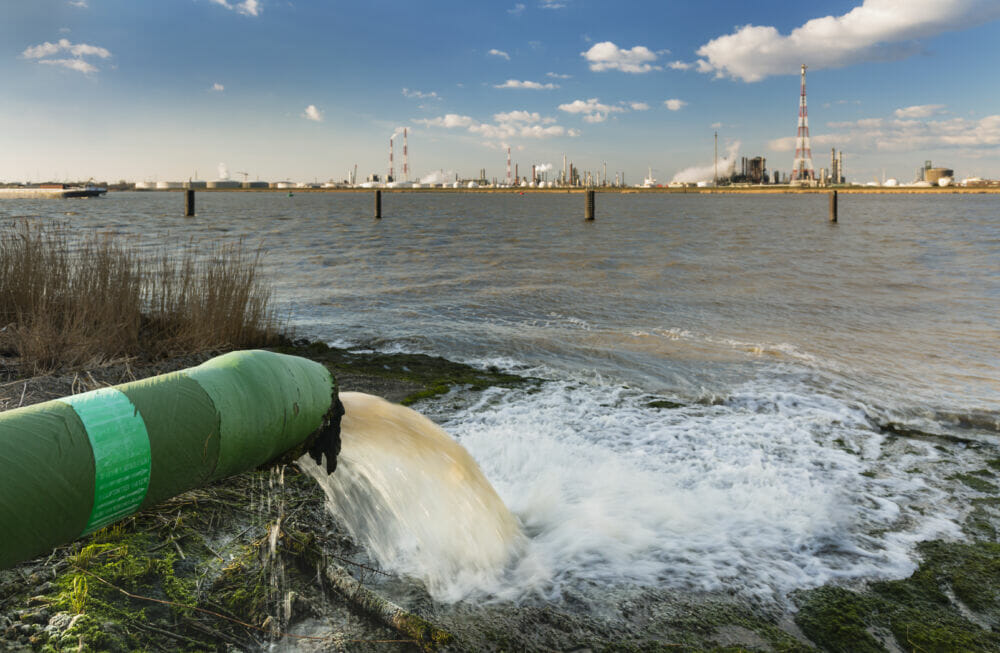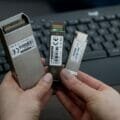Low-temperature, ambient-pressure technology paves the way to treating industrial wastewater using only waste heat as the sole power source – driving down costs and significantly lessening environmental impact.
By Mark Hardiman, CEO, LAT Water
Almost all manufacturing processes use water, whether it is an ingredient of the final product or simply used to wash down assets, whatever its use, there is no escape that industrial manufacturing produces a high-volume of wastewater. This industrial wastewater can take many forms. In some cases, the water has taken on volatile harmful properties, and others the wastewater contains valuable product that is integral to the manufacturing process. In both cases, and everything in between, the outcome is the same, the wastewater must be treated before it is either reused in the process or it enters the environment.
Traditional treatment of industrial wastewater is both an energy and resource intensive process and manufacturers generally look to these conventional methods or opt to truck their leachate offsite to a specialist facility. This situation made us question: Is there a solution to industrial wastewater treatment that can be both affordable and environmentally friendly?
At LAT Water Ltd, we have created a ground-breaking innovation which offers a sustainable solution to industrial wastewater treatment. Low Ambient pressure Technology (LAT™) is a game-changer for most industrial processes that create wastewater – to date most research in the field has focused on incremental improvements in base technologies rather than seeking a step-change solution. LAT creates zero emissions to air and water by using waste heat or renewable energy as thermal energy input as opposed to relying on outdated, energy-hungry processes which contribute significantly to climate change. The technology has been shown to reduce energy usage by up to 70%.
LAT challenges traditional techniques head on by removing the need for thermal solutions that use boiling water and pressure vessels to treat wastewater. By using waste heat, or even renewable energy, as the energy source, the method creates an opportunity for operators to treat water on-site in a cost-effective and sustainable way that also delivers zero liquid discharge (ZLD). The sectors in which the technology can be used are wide and varied – from a manufacturer producing pharmaceuticals, pulp and paper for packaging, to power generation in oil and gas sectors. LAT also recovers dissolved contaminants from the product stream.
LAT uses waste heat collected from a variety of processes to power humidification and dehumidification columns, which run at ambient temperatures. This produces two streams: clean distillate water and a concentrated liquid that can contain valuable salts, minerals or materials depending on the sector, all can be easily extracted. Clean water produced by the LAT process meets all relevant discharge limits and can be reused for process water or agriculture.
Wastewater in manufacturing
Industrial wastewater is an undesirable, but unavoidable by-product in many manufacturing processes and each sector has a unique need and approach for treatment. As mentioned, some facilities generate wastewater that is then transported by tanker to an offsite wastewater treatment plant, on the other hand petrochemical plants, for instance, have specialist equipment to remove pollutants, and food manufacturers must remove organic matter before water is re-used. Now more than ever, there is a drive to minimise industrial wastewater pollution, drive down costs and prevent negative impact on the climate. Industries have for a long time needed a cost-effective solution that only puts clean water back into the environment without requiring high-intensity energy resources to do so.
One element of industrial water treatment that we want to address at LAT Water is the complicated and costly issue of disposal. Whether a company chooses to dispose of wastewater at a large water treatment plant or pre-treating wastewater to reduce external charges, these are still labour, resource and energy intensive processes where the wastewater journey starts by being transported offsite via road, using tankers.
When we were assessing what is currently available for industrial water treatment it was clear to us why a low impact reliable solution that uses only waste heat in the process, in an efficient manner, was so valuable. Traditional membrane technology clogs frequently and leads to extra maintenance costs and downtime as well as delivering poor water recovery. Contaminated water from coking and chemical plants is often a candidate for offsite treatment – also wasting valuable dissolved product which, using LAT, can be processed and extracted from wastewater.
Clean and sustainable solution Not only does the use of waste heat by LAT provide net carbon savings as well as putting to use heat sources which would otherwise be wasted, it eliminates pollution and the user can recover valuable products before being discharged or reused. Product concentrate can be treated on a tailored basis to ensure discharge limits are met. LAT is a vital technology in the decarbonisation goals of operators while delivering a significant return on investment (ROI) through efficiency savings.
Harnessing the LAT Water solution delivers value that can be seen across an organisation and even reaching into local communities, with the reduction in the need for road-tankering waste to offsite facilities. And a tailored flexible design to installations, LAT can handle a variation of flowrates and water quality when compared with competing systems, making it ideal to handle the unique needs of different sectors. Low grade waste heat can be found abundantly throughout manufacturing and process environments. Boilers, exhausts, furnaces, and even most industrial assets will produce heat that can be utilised as the power source for the LAT Water solution.
With established energy efficiency and a solution that can treat more complex waters that other systems in just one step, LAT Water offers facility owners over 60% of cost savings when it comes to operating costs.
Conclusion
The LAT Water process is a low cost, sustainable, reliable solution for wastewater treatment and can be applied across the industrial spectrum. Whether businesses are dealing in large quantities of wastewater about to re-enter the environment, or highly concentrated chemicals that are valuable to the supply chain, LAT Water is the solution. Not only will the process leave clean water, but product can also be recovered to further increase value and ROI.
Taking responsibility for environmental impact rests on the shoulders of all of us within industry. Industrial wastewater treatment is a necessary process, and that need isn’t going away. The future of this process is about completing it with the zero impact to the environment, the LAT Water solution achieves this while also saving significant costs.








